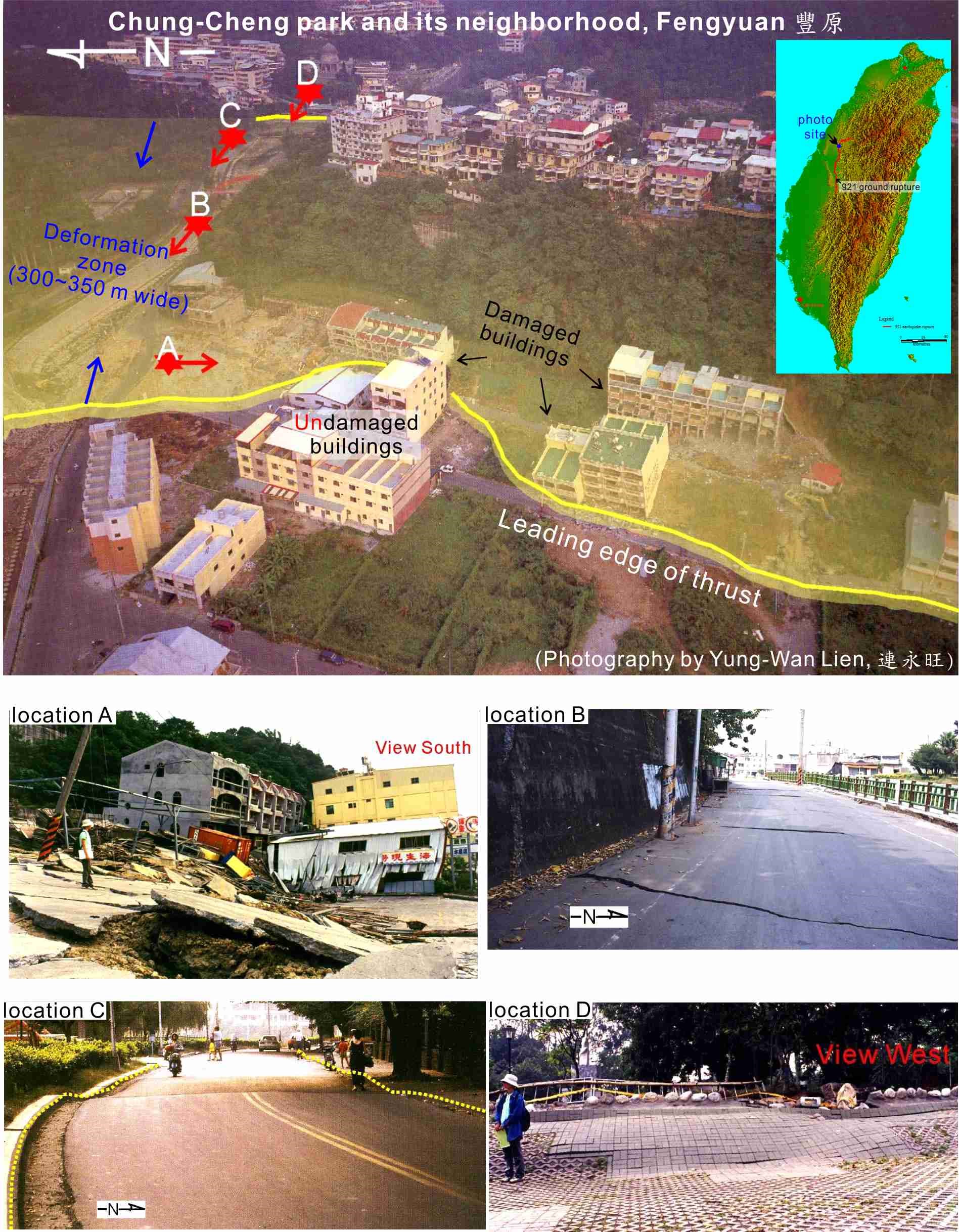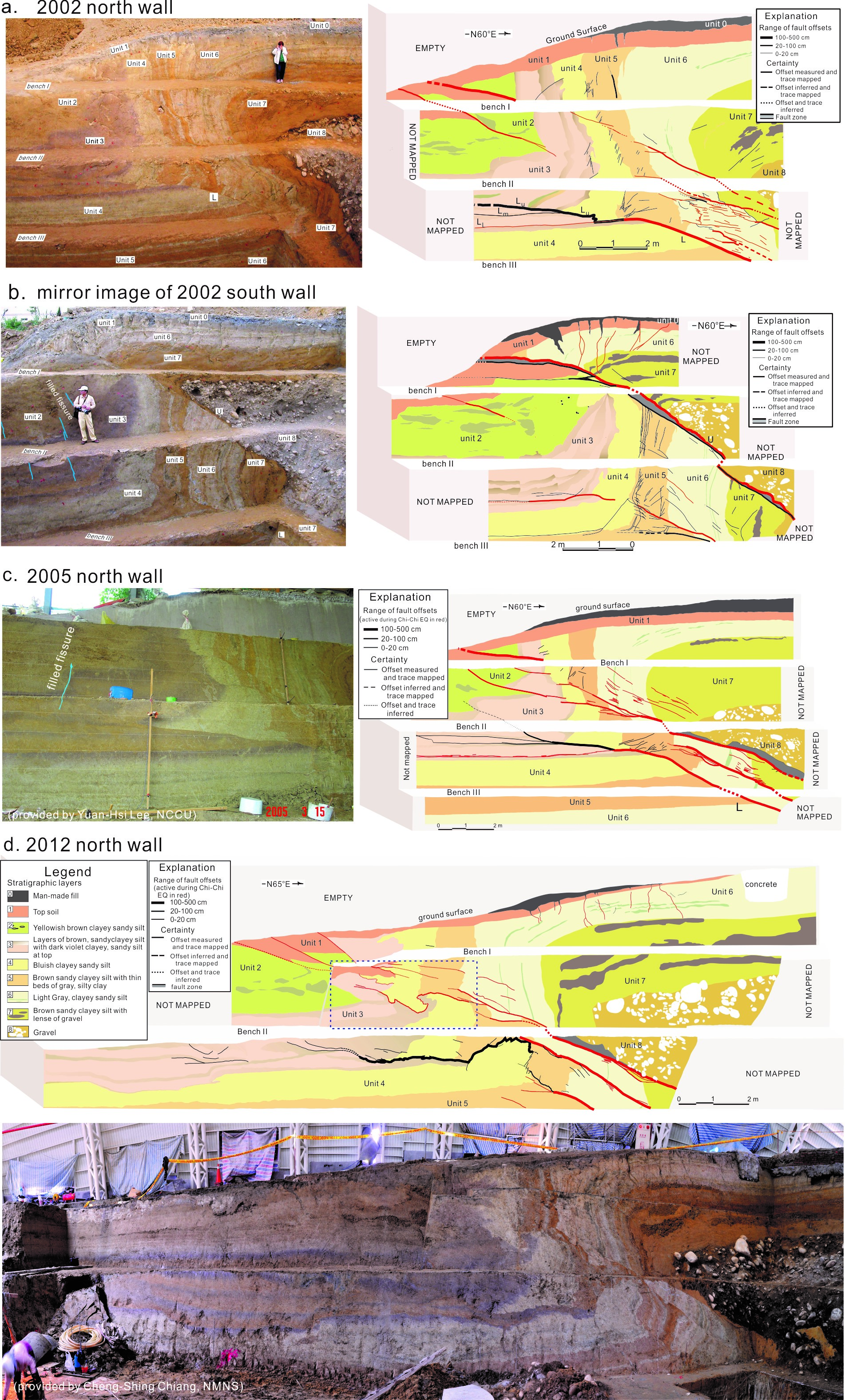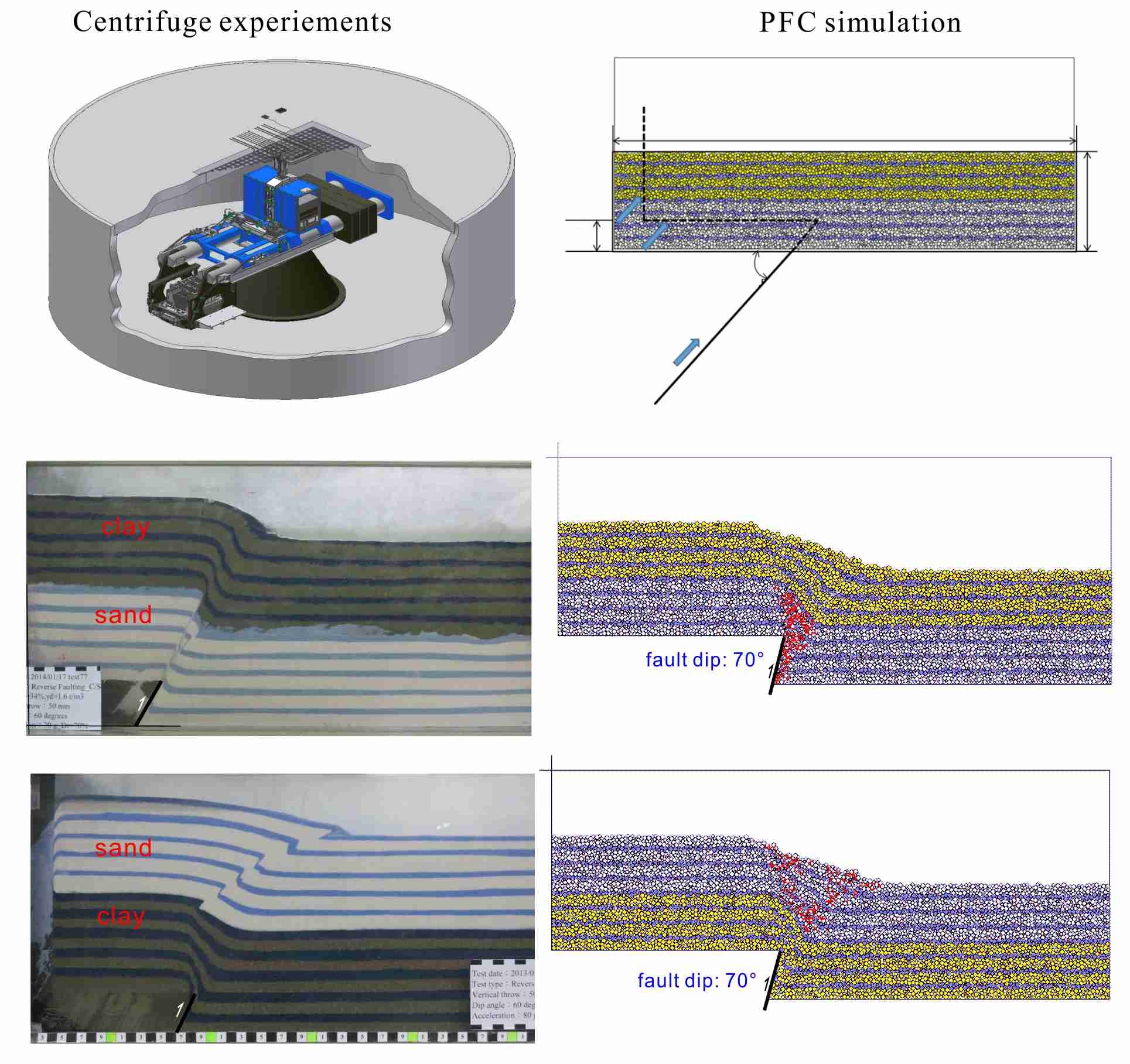Near-ground deformation induced by active faulting
|
Collaborators:
Chen, Wen-Shan (Department of Geosciences, National Taiwan University) Lee, Jian-Cheng (Institute of Earth Sciences, Academia Sinica) Lin, Ming-Lang (Department of Civil Engineering, National Taiwan University) Huang, Wen-Chao (Department of Civil Engineering, National Central University, Taiwan) Chang, Yeo-Yie (Department of Applied Geology Institute, National Central University, Taiwan) , Ground distortion, one of four earthquake phenomena (i.e. ground shaking, various kinds of foundation soil failures, seismic pulses of ground and ground distortion has become my research interest since the Mw 7.6 Chi-Chi, Taiwan, earthquake caused considerable damage to engineering structures in 1999. In ground distortion, the ground is strained or fractured within a belt at the earth's surface due to faulting. Several geologists, G. K. Gilbert, F. E. Matthes, E. S.Larsen and A. Lawson, who were charged with describing the rupture of the 1906 San Francisco earthquake mostly north of San Francisco, showed incontrovertibly that earthquake ruptures were in some cases traces of fault planes but in many cases were zones of distortion, which I call deformation zones hereafter. Although it has been observed that engineering structures situated on either fault traces or in deformation zones were damaged, little attention was paid to deformation zones prior to 1990s. I noticed that the Chi-Chi earthquake surface deformation zone ranges from a meter or two up to hundreds of meters in width, and characterized by a 0.5 to 5 m high escarpment is much wider in the hanging wall. Figure 1 shows an example of the Chi-Chi earthquake deformation zone. I always feel deep responsibility for those suffered during the Chi-Chi earthquake because I was one of active fault team members in Central Geological Survey at the time. This research has a twofold purpose: one is scientific intention to understand how deformation zones form and the other is practical intention to help governments to delineate zones of surface fault-rupture hazard, formulate regulations for earthquake fault zones and fault setbacks, and encourage landowners to avoid fault zones for land development. In order to study near-ground deformation induced by active faulting, my collaborators and I have taken three approaches: field observation, physical experiments and theoretical modeling. Except collecting literatures and reports for relevant field observation, we worked on structures in trenches excavated across active faults (an example shown in Figure 2). We also conducted sand-box experiments and centrifuge experiments along with boundary element and discrete element analyses (examples shown in Figure 3) to model fault slip and estimate the width of induced surface deformation zones. Please refer to our papers (link) for our outcomes and other further information. In the future, I will continue to look for good trenching sites for near-ground deformation and paleoearthquake studies. Meanwhile, my research group will continue physical experiments and theoretical modeling for this research topic. |

|
| Figure 1. Ground distortion induced by 1999 earthquake faulting in Chung-Cheng Park and its neighborhood, Central Taiwan. |

|
| Figure 2. Heterogeneous structures of the 1999 Mw 7.6 Chi-Chi earthquake thrust termination in Chushan excavation site, central Taiwan. |

|
| Figure 3. Examples of centrifuge experiments and Particle Flow Code (PFC) simulations for reverse faulting (photos provided by Dr. Chung-Jung Lee) |


